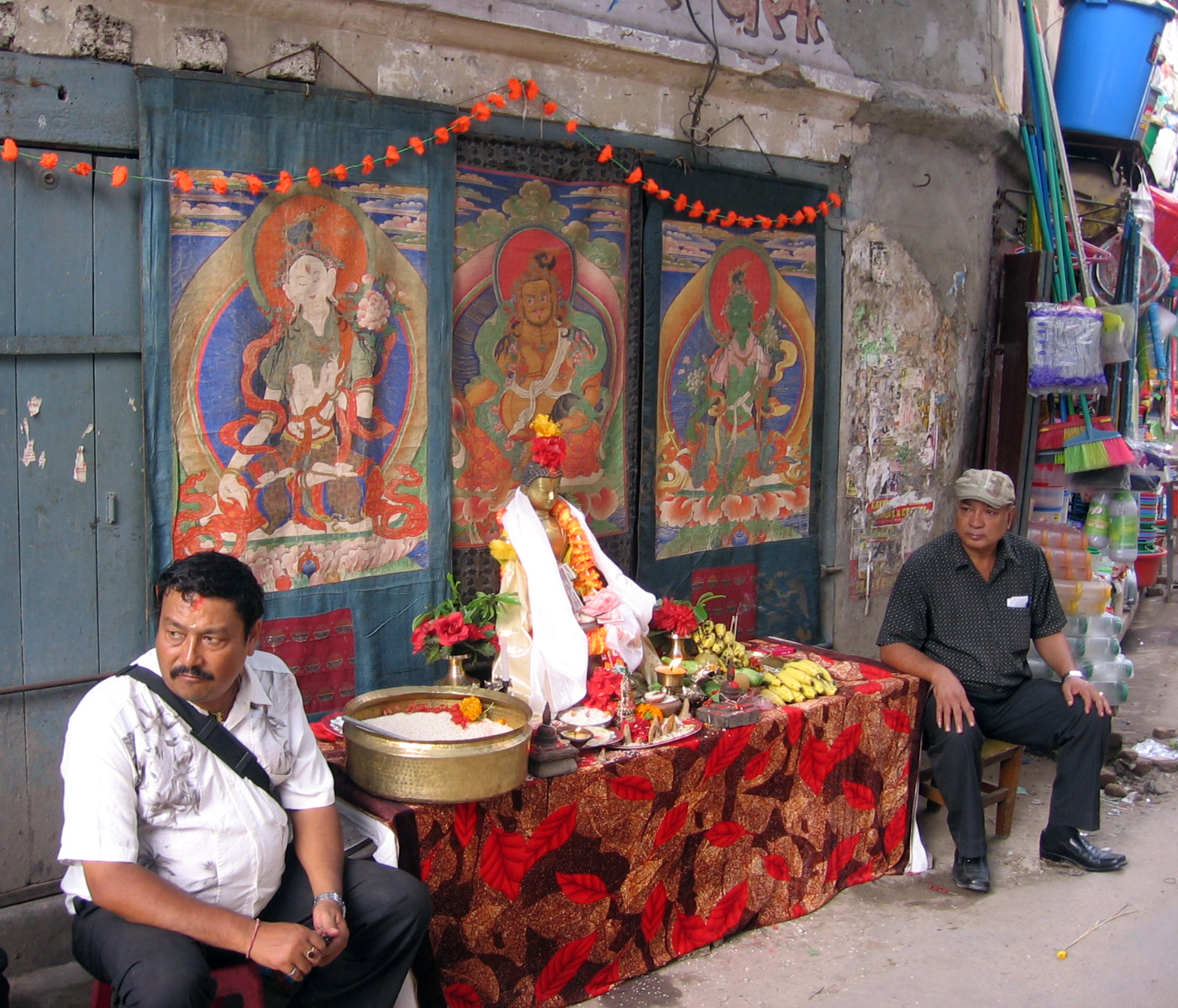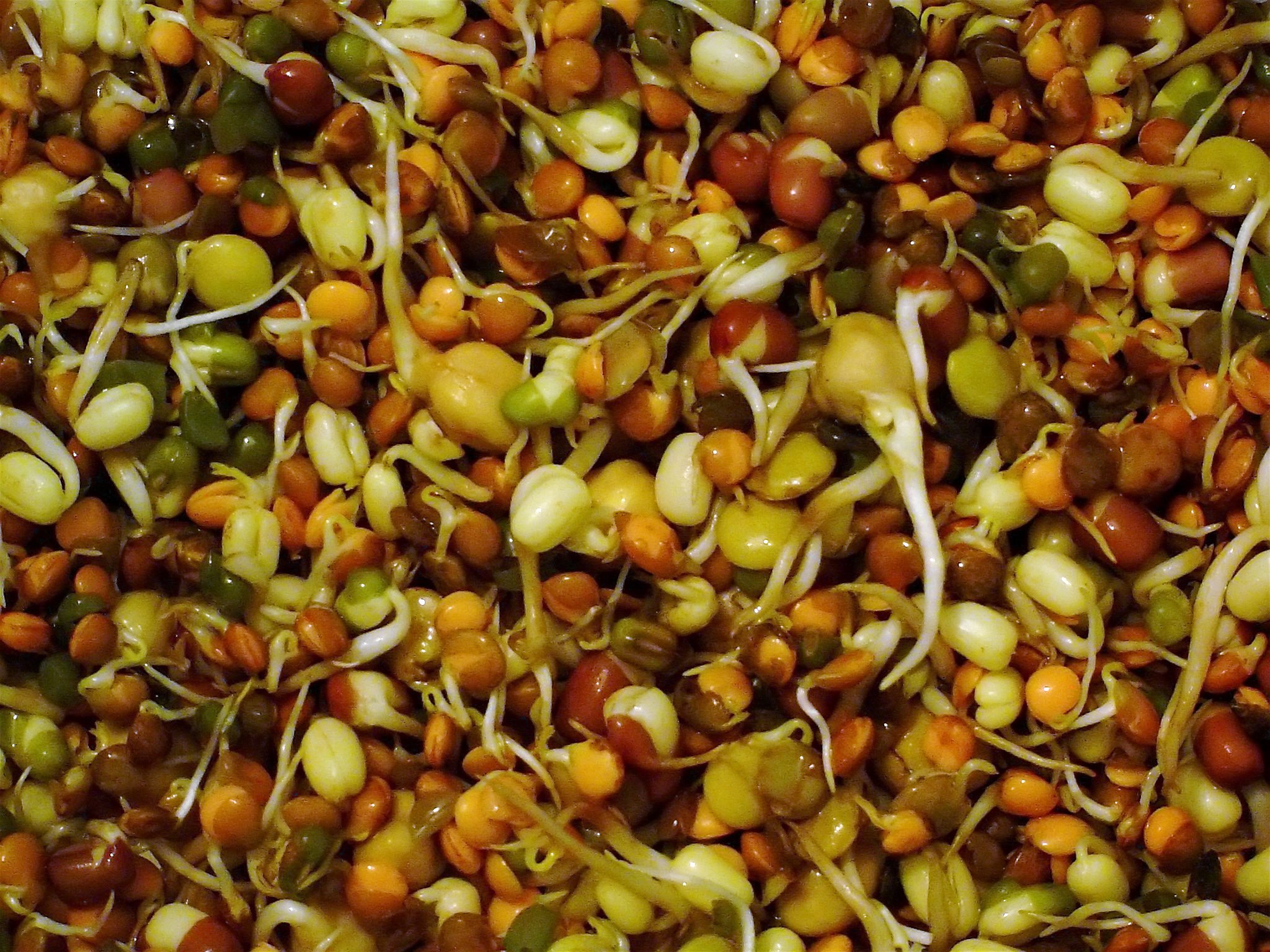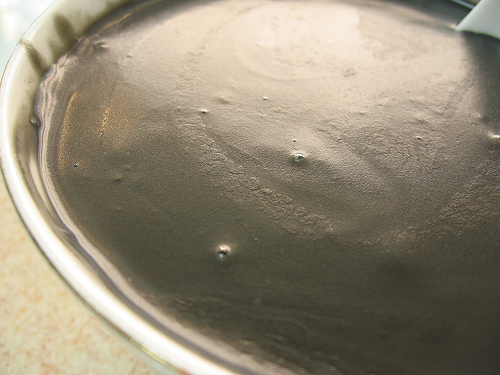|
Bean Soup
This is a list of notable bean soups, characterized by soups that use beans as a primary ingredient. Bean soups * 15 Bean Soup – a packaged dry bean soup mix produced by the N.K. Hurst Co. in the United States * Amish preaching soup – in American cuisine, it was typically served preceding or following Amish church services. Some versions are prepared with beans and ham hocks. * Bissara – a soup and a bean dip in African cuisine, prepared with dried, puréed broad beans as a primary ingredient. * Black bean soup * Bob chorba – a national Bulgarian dish, the name translates to "bean soup". It is prepared using dried beans, onions, tomatoes, Summer savory, chubritza or dzhodzhen (spearmint) and carrots. * Bouneschlupp – a traditional Luxemburgish green bean soup with potatoes, bacon, and onions *Dal, a term used for lentils, a dish of cooked lentils, and lentil soup on the Indian subcontinent * Fasolada – a Greek, Levantine, and Cypriot soup of dry white beans, olive o ... [...More Info...] [...Related Items...] OR: [Wikipedia] [Google] [Baidu] |
Fasolada
Fasolada ( el, φασολάδα) or fasoulada ( el, φασουλάδα) is a Greek, Mediterranean, and Cypriot soup of dry white beans, olive oil, and vegetables. It is sometimes called the "national food of the Greeks".Λεξικό της κοινής Νεοελληνικής, 1998 Fasolada is made by simmering beans with tomatoes and other vegetables such as carrots, onion, parsley, celery, and bay leaf. Lima beans are sometimes used instead of white beans. Recipes vary considerably, often including meat like '' bastırma'' and olive oil. Similar dishes Its counterparts are Italian '' fagiolata'', the Portuguese and Brazilian ''feijoada'', Romanian ''fasole'' and Spanish ''fabada''. A similar dish in Turkish cuisine is called ''kuru fasulye''. The Arabic version is called fasoulia ( ar, فاصوليا) and is found in Egypt, Iraq, Israel, Jordan, Lebanon, Libya, Palestine, Saudi Arabia, Sudan, Syria, and Yemen. See also * Gigandes plaki * Arab cuisine * Greek cuisine * Lis ... [...More Info...] [...Related Items...] OR: [Wikipedia] [Google] [Baidu] |
Green Bean
Green beans are young, unripe fruits of various cultivars of the common bean ('' Phaseolus vulgaris''), although immature or young pods of the runner bean (''Phaseolus coccineus''), yardlong bean ( ''Vigna unguiculata'' subsp. ''sesquipedalis''), and hyacinth bean (''Lablab purpureus'') are used in a similar way. Green beans are known by many common names, including French beans (), string beans (although most modern varieties are "stringless"), and snap beans or simply "snaps". In the Philippines, they are also known as "Baguio beans" or "" to distinguish them from yardlong beans. They are distinguished from the many other varieties of beans in that green beans are harvested and consumed with their enclosing pods, before the bean seeds inside have fully matured. An analogous practice is the harvest and consumption of unripened pea pods, as is done with snow peas or sugar snap peas. Culinary use As common food in many countries, green beans are sold fresh, canned, and f ... [...More Info...] [...Related Items...] OR: [Wikipedia] [Google] [Baidu] |
Gunlā
Gunlā (Nepal Bhasa: गुंला) (also spelt Gumlā) is the tenth month in the Nepal Sambat lunar calendar, the national lunar calendar of Nepal. It corresponds to August of the Gregorian Calendar. Gunla is a holy month for Newar Buddhists when they recite the scriptures, observe fasts and visit places of worship playing devotional music. It is one of the most important events in Newar Buddhism. The practice of observing the sacred month is descended from the rains retreat dating from the Buddha's time when monks are to stay in one place and taught the Dhamma to the locals during this period. According to traditional beliefs, during primitive times, too much rain would fall. Due to this rain, the mud houses during the time would get devastated, moreover floods and landslides would add melancholy in people's lives. So, in order to downturn the melancholy, and be safe from floods and landslides, people would go to Swayambhu playing the devotional music as it was in an elevati ... [...More Info...] [...Related Items...] OR: [Wikipedia] [Google] [Baidu] |
Sprouting
Sprouting is the natural process by which seeds or spores germinate and put out shoots, and already established plants produce new leaves or buds, or other structures experience further growth. In the field of nutrition, the term signifies the practice of germinating seeds (for example, mung beans or sunflower seeds) to be eaten raw or cooked, which is considered more nutritious. Suitable seeds All viable seeds can be sprouted, but some sprouts, such as kidney beans, should not be eaten raw. Bean sprouts are a common ingredient across the world. They are particularly common in Eastern Asian cuisine. It typically takes one week for them to become fully grown. The sprouted beans are more nutritious than the original beans, and they require much less cooking time. There are two common types of bean sprouts: * Mung bean sprouts, made from greenish-capped mung beans * Soybean sprouts, made from yellow, large-grained soybeans Common sprouts used as food include: * Pulses ... [...More Info...] [...Related Items...] OR: [Wikipedia] [Google] [Baidu] |
Kwati (soup)
Kwāti (Nepal Bhasa: (where (kwa) = hot and (ti) = soup); ne, क्वाँटी; ) is a mixed soup of nine types of sprouted beans. It is a traditional Newari dish consumed on the festival of Guni Punhi, the full moon day of Gunlā which is the tenth month in the Nepal Era lunar calendar. It is also known and widely consumed as ''Gedagudi'' in the Mithila Region of Nepal, historically aligned down to Kingdom of Nepali people. Consumption Kwāti is eaten as a delicacy and for its health benefits and ritual significance. Kwati is known to be a healthy food. It is said to cure colds and coughs, and be particularly good for pregnant women. Since it contains varieties of beans, this recipe is loaded with proteins and thus helps weak/sick people to regain their energy. The feast day coincides with Shravan Poornima of the month of Shravan in the Hindu lunisolar calendar which is celebrated as Janāi Purnimā (Raksha Bandhan), the festival of the sacred thread. The festival oc ... [...More Info...] [...Related Items...] OR: [Wikipedia] [Google] [Baidu] |
Pinto Bean
The pinto bean () is a variety of common bean (''Phaseolus vulgaris''). In Spanish they are called , literally "painted bean" (compare pinto horse). It is the most popular bean by crop production in Northern Mexico and the Southwestern United States, and is most often eaten whole (sometimes in broth), or mashed and then refried. Either way, it is a common filling for burritos, tostadas, or tacos in Mexican cuisine, also as a side or as part of an entrée served with a side tortilla or sopaipilla in New Mexican cuisine. In South America, it is known as the , literally "strawberry bean". In Portuguese, the Brazilian name is (literally " bean"; contrary to popular belief, the beans were not named after Rio de Janeiro, but after a pig breed that has the same color as the legume), which differs from the name in Portugal: . Additionally, the young immature pods may be harvested and cooked as ''green pinto beans''. There are a number of different varieties of pinto bean, notably some o ... [...More Info...] [...Related Items...] OR: [Wikipedia] [Google] [Baidu] |
Jókai Bean Soup
Jókai bean soup is a Hungarian bean soup. Origin The soup was named after Jókai Mór, a Hungarian writer. Jókai was a regular guest at a restaurant in Balatonfüred, where he almost always ordered bean soup, which was subsequently named in honor of him. Multiple sources state that he also enjoyed '' halászlé''. In Jókai's works, there are gastronomic writings, compilations, and resources. In 1854 he published ''Zoltán Kárpáthy,'' in which there is a detailed description of a buffet. See also * List of bean soups This is a list of notable bean soups, characterized by soups that use beans as a primary ingredient. Bean soups * 15 Bean Soup – a packaged dry bean soup mix produced by the N.K. Hurst Co. in the United States * Amish preaching soup – in ... * List of soups References {{DEFAULTSORT:Jokai Bean Soup Hungarian cuisine Bean soups Legume dishes ... [...More Info...] [...Related Items...] OR: [Wikipedia] [Google] [Baidu] |
Tang Shui
''Tong sui'' (; ), also known as ''tim tong'', is a collective term for any sweet, warm soup or custard served as a dessert at the end of a meal in Cantonese cuisine. ''Tong sui'' are a Cantonese specialty and many varieties are rarely found in other regional cuisines of China. Outside of Cantonese-speaking communities, soupy desserts generally are not recognized as a distinct category, and the term ''tong sui'' is not used. In Hong Kong, Macao and Malaysia, a large variety of tong sui is served in tong sui specialty stores. Tong sui stores have also gained prominence in overseas Chinese communities, and are found in various parts of Canada, Australia and the United States. History Tong sui shops in Hong Kong mainly originated from the postwar period. Chinese migrants brought their hometown sweet soups to Hong Kong, such as red bean soup from Guangzhou and tang yuan from Shanghai. Newcomers sold tong sui in newly opened street side food stalls and Chinese tea ... [...More Info...] [...Related Items...] OR: [Wikipedia] [Google] [Baidu] |
Hong Dou Tang
Hong dou tang () is a popular Chinese dish served in Mainland China, and Taiwan. It is categorized as a ''tang shui'' 糖水 (pinyin: táng shuǐ) (literally translated as sugar water) or sweet soup. It is often served cold during the summer, and hot in the winter. Leftover red bean soup can also be frozen to make ice pops and is a popular dessert. A similar dessert 紅豆沙 in Hong Kong is commonly mistaken by people outside Hong Kong as the same dessert, of which the latter one has a very different texture. In Cantonese cuisine, a red bean soup made from rock sugar, sun-dried tangerine peels, and lotus seeds is commonly served as a dessert at the end of a restaurant or banquet meal. Common variations include the addition of ingredients such as sago (西米, pinyin: xī mi), tapioca, coconut milk, ice cream, glutinous rice balls, or purple rice. The two types of sugar used interchangeably are rock sugar and sliced sugar (). Similar dishes Unsweetened red bean porridge ma ... [...More Info...] [...Related Items...] OR: [Wikipedia] [Google] [Baidu] |
Egypt
Egypt ( ar, مصر , ), officially the Arab Republic of Egypt, is a transcontinental country spanning the northeast corner of Africa and southwest corner of Asia via a land bridge formed by the Sinai Peninsula. It is bordered by the Mediterranean Sea to the north, the Gaza Strip of Palestine and Israel to the northeast, the Red Sea to the east, Sudan to the south, and Libya to the west. The Gulf of Aqaba in the northeast separates Egypt from Jordan and Saudi Arabia. Cairo is the capital and largest city of Egypt, while Alexandria, the second-largest city, is an important industrial and tourist hub at the Mediterranean coast. At approximately 100 million inhabitants, Egypt is the 14th-most populated country in the world. Egypt has one of the longest histories of any country, tracing its heritage along the Nile Delta back to the 6th–4th millennia BCE. Considered a cradle of civilisation, Ancient Egypt saw some of the earliest developments of writing, agriculture, ur ... [...More Info...] [...Related Items...] OR: [Wikipedia] [Google] [Baidu] |
Ful Medames
Ful medames ( ar, فول مدمس, ' ; other spellings include ''ful mudammas'' and '' foule mudammes''), or simply fūl, is a stew of cooked fava beans served with olive oil, cumin, and optionally with chopped parsley, garlic, onion, lemon juice, chili pepper, and other vegetable, herb, and spice ingredients. Ful medames is traditionally made in and served out of a large metal jug. It is notably a staple food in Egypt and is considered a national dish, especially in the northern cities of Cairo and Gizah. Fava beans can sometimes be also found in other cuisines in the Middle East, and Africa, though cooked differently. History Some writers have suggested that ful medames dated all the way back to Ancient Egypt. Some evidence of the use of ful is a cache of 2,600 dried fava beans unearthed at a late Neolithic site on the outskirts of Nazareth. This dish is mentioned in the Jerusalem Talmud, indicating that it was used in Horn of African and Middle Eastern countries since t ... [...More Info...] [...Related Items...] OR: [Wikipedia] [Google] [Baidu] |
Good Friday
Good Friday is a Christian holiday commemorating the crucifixion of Jesus and his death at Calvary. It is observed during Holy Week as part of the Paschal Triduum. It is also known as Holy Friday, Great Friday, Great and Holy Friday (also Holy and Great Friday), and Black Friday. Members of many Christian denominations, including the Catholic, Eastern Orthodox, Lutheran, Anglican, Methodist, Oriental Orthodox, United Protestant and some Reformed traditions (including certain Continental Reformed, Presbyterian and Congregationalist churches), observe Good Friday with fasting and church services. In many Catholic, Lutheran, Anglican and Methodist churches, the Service of the Great Three Hours' Agony is held from noon until 3 pm, the time duration that the Bible records as darkness covering the land to Jesus' sacrificial death on the cross. Communicants of the Moravian Church have a Good Friday tradition of cleaning gravestones in Moravian cemeteries. The date of Good Fr ... [...More Info...] [...Related Items...] OR: [Wikipedia] [Google] [Baidu] |







